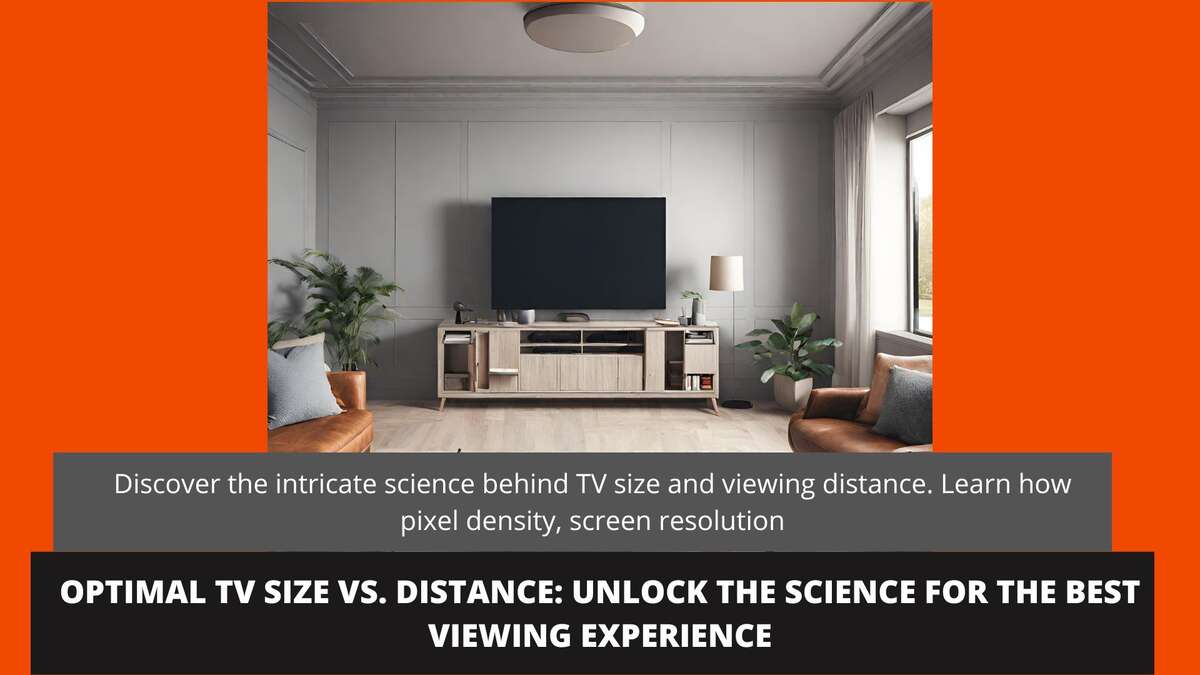For many, selecting the right size of television for a room might seem like a matter of personal preference or aesthetics. However, beyond the mere 'look' of your entertainment setup, there's a compelling science at play. The interplay between TV size, pixel density, screen resolution, and viewing distance is influenced significantly by the physiology of our eyes. By understanding these dynamics, you can elevate your viewing experience from ordinary to optimal. This article delves into these factors, aiming to equip you with knowledge that can guide your next TV purchase or repositioning.
The Physiology of the Human Eye and Viewing
The human eye is an intricate organ, designed to capture light and translate it into images. While it has a phenomenal ability to adapt to various light conditions and distances, there's a limit to what it can perceive in terms of detail—especially when it comes to discerning the individual pixels on a television screen.
Pixel density refers to the number of pixels in a specific area of the screen. A higher pixel density means more pixels are packed into that area, leading to clearer and more detailed images. However, if you sit too close to a TV, especially one with lower pixel density, you might begin to see these individual pixels, a phenomenon known as the 'screen door effect'.
Screen resolution, on the other hand, is the total number of pixels that a screen can display, commonly referred to in terms like 1080p, 4K, or 8K. The higher the resolution, the more detailed the image. But, there's a catch: if you're sitting too far from a high-resolution TV, your eyes won't be able to appreciate that extra detail. Conversely, if you're too close, every imperfection becomes evident.
Finding the Perfect Balance: TV Size and Viewing Distance
So, how do we find that sweet spot—the perfect harmony between TV size and viewing distance? The general rule of thumb is that the ideal viewing distance is approximately 1.5 to 2.5 times the diagonal size of your television for HD TVs. For 4K TVs, you can sit closer—around 1 to 1.5 times the diagonal length. But why these numbers?
This balance is rooted in ensuring that viewers are seated at a distance where they can't discern individual pixels but can still appreciate the detail offered by the resolution. Optimal viewing is achieved when our eyes are comfortably within the resolution sweet spot, extracting the maximum detail without any of the drawbacks.
Modern TV Technologies and Their Influence
With advancements in television technology, including the advent of OLED and QLED panels, contrast ratios have improved, and blacks have become deeper. These improvements also influence our perception of detail and depth, allowing viewers to sit closer to TVs than before without compromising on visual comfort.
Tools to Guide Your Decision
If you're in the process of choosing a new TV or rearranging your living space, you might be wondering how to take all this information and apply it practically. Fortunately, there are tools available that can help. The TV Size and Viewing Distance Calculator is a comprehensive guide that factors in various elements, including screen resolution and room size, to provide tailored recommendations. It simplifies the science behind the decision, ensuring that you achieve an optimal viewing experience tailored to your space and TV specifications.
“The best seat in the house is not just about position but also about perspective. Understanding the science behind TV viewing ensures that every movie night, gaming session, or binge-watching marathon is visually immersive and comfortable.”
Conclusion
The journey from merely watching to optimally viewing is paved with a little bit of science and understanding. By factoring in pixel density, screen resolution, and viewing distance, you can transform any room into a mini-theater, ensuring the best visual experience possible. Remember, it's not just about size or how close you sit, but about understanding the intricate dance between all these elements. So, the next time you're contemplating a TV purchase or debating where to place your couch, let science guide your choices.
